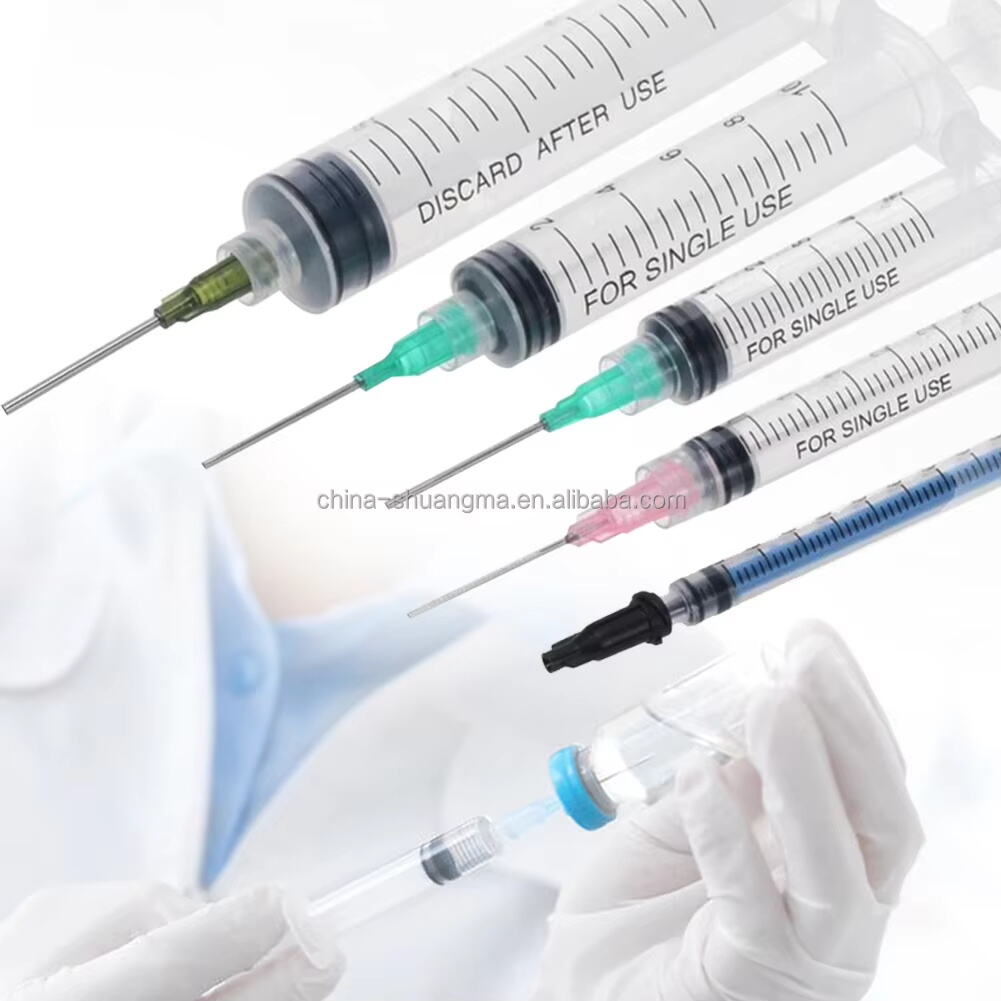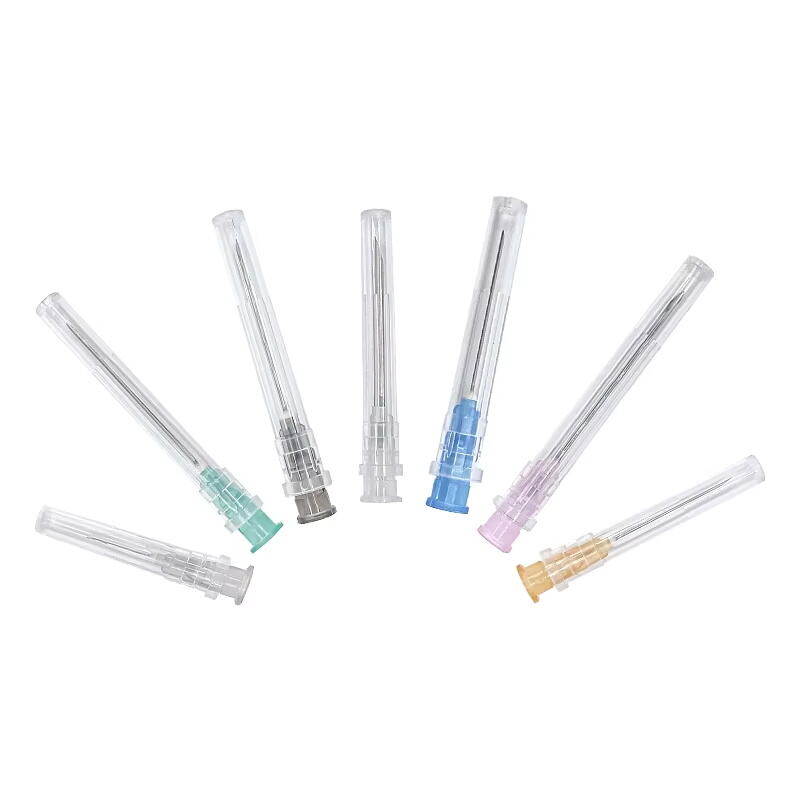Importance of Sterile Disposable Syringes
Preventing Cross-Contamination in Healthcare
Medical facilities face ongoing risks from cross contamination when germs spread between patients and staff members who don't follow good hygiene protocols. Disposable syringes that are properly sterilized help cut down on this problem quite a bit since they stop bacteria and viruses from moving around so easily. Research points to poor sterilization techniques being one of the main reasons behind rising infection numbers in hospitals and clinics. A recent World Health Organization study found that sticking to safe injection methods like always using clean needles reduces infections related to medical treatments by a lot. That's why most health authorities insist on sterile equipment for everything from routine shots to complex surgeries, emphasizing what happens when things go wrong with contaminated tools versus the benefits of proper sterilization procedures throughout healthcare settings.
Reducing Healthcare-Associated Infections (HAIs)
Infections picked up during medical treatment in hospitals and clinics are known as Healthcare-Associated Infections (HAIs). These bugs cause all sorts of problems for patients, often making their stay longer than expected and driving up medical bills. Getting rid of contaminated needles through proper disposal plays a big role in keeping these infections at bay. Research shows that hospitals where staff stick to good hygiene practices see fewer cases of HAIs. Some facilities have cut infection rates by almost half just by making sure everyone follows basic safety rules around needle handling. Health organizations across the country back this approach, stressing how important clean syringes are for protecting both patients and workers. When healthcare teams make infection control a priority day after day, it makes a real difference in how people recover from illness and injury.

Key Features of Safe Syringe Design
Material Safety and Sterilization Standards
When it comes to keeping sterile disposable syringes safe, everything starts with what they're made from. Medical grade plastics and stainless steel are the go to choices because they last longer and don't react with anything inside the body, which obviously matters a lot for patients getting injections. Getting rid of germs is another big deal, so manufacturers use things like ethylene oxide gas or gamma radiation to kill off any harmful stuff that might be lingering around. The rules set by organizations like the FDA and ISO aren't just suggestions either. They've got strict guidelines about making sure every single syringe coming out of production lines stays clean and contamination free. No shortcuts allowed here since patient health depends on it. Research shows that when hospitals stick to these material specs and proper sterilization techniques, there's way less chance of infections happening during treatments. That's why most clinics and doctors offices continue investing in quality syringes despite the costs.
Single-Use vs. Multi-Dose Vials
Single use syringes tend to offer better safety than ones that come from multi dose vials. The main difference comes down to infection risk really. When doctors throw away single use syringes right after giving an injection, it cuts down on cross contamination problems. Multi dose vials tell a different story though. These containers get poked multiple times with needles, which raises the chance of spreading germs between patients. That's why most clinics and hospitals have switched over to single use options lately. They just make more sense when following infection control rules. Doctors and nurses we talked to emphasize how much easier these syringes are to work with too. Every time someone administers medicine through a single use syringe, they know they're starting fresh with something completely sterile. This approach has become standard practice across medical facilities looking to keep everyone safe.
Proper Usage Protocols for Sterile Syringes
Safe Injection Practices and Needle Disposal
Safe injection practices matter a lot for everyone involved - patients definitely, but also for those working in healthcare. The basic rule? Always grab fresh, sterile syringes and needles before giving any shot. This simple step cuts down on cross contamination risks significantly. After injections though, what happens next counts just as much. Needles need proper disposal right away to avoid those painful stick accidents that can transmit dangerous diseases like HIV or hepatitis B. We've seen plenty of cases across US hospitals where bad disposal habits led to actual injuries among staff members. That's why most facilities now invest time into thorough training sessions covering these basics. Organizations like the CDC put together pretty comprehensive guides on how to handle needles safely throughout their entire lifecycle. But let's face it, no matter how good the guidelines are, they only work when people actually follow them consistently in real world situations.
Avoiding Medication Vial Misuse
When medication vials aren't handled properly, there are serious consequences. Cross contamination happens all too easily, and this raises the risk of those nasty healthcare associated infections we all try so hard to avoid. Take this scenario: someone grabs the same old syringe and sticks it into multiple vials throughout their shift. That's basically inviting bacteria party time inside those containers. The gold standard here is what some call the triple rule – one needle, one syringe, just one use period. This simple method stops contaminants from getting where they shouldn't be and keeps patients safe. Healthcare workers make these kinds of errors surprisingly often. We've seen nurses reuse needles after thinking they had enough left in the vial, or worse yet, accidentally mix medications because they got confused between similar looking packages. These situations underscore why continuous training remains absolutely critical for staff across all medical facilities. Proper technique isn't just about following rules; it literally saves lives when done right.

Role in Harm Reduction Strategies
Syringe Service Programs (SSPs) and Public Health
Syringe Service Programs, or SSPs for short, work to stop the spread of infections among people who use needles. These programs give out clean needles and offer important health services too, such as getting vaccinated or tested for HIV. Real world experience shows that when people can access these services, they share needles way less often, which cuts down on serious illnesses like hepatitis C and HIV. Research also points to something interesting: folks who take part in SSPs actually end up going into rehab programs about five times more than those who don't participate at all. That makes a big difference for communities. When local health departments team up with SSPs, everyone wins because there's better access to medical help and support systems for people facing tough situations.
Addressing Infectious Disease Outbreaks
Having enough sterile disposable syringes on hand makes all the difference when it comes to stopping infectious diseases from spreading, particularly in areas where people are already at higher risk. When communities can get their hands on these syringes quickly, they've actually managed to contain outbreaks before they get out of control. Take what happened during recent measles cases in urban centers for instance - fast distribution really helped keep things under wraps. Groups like the CDC have been pushing for hospitals and clinics to stock up properly so infections don't run rampant. The numbers back this up too. Places with better access to clean needles tend to see fewer cases popping up. At the end of the day, making sure syringes are available isn't just about medical protocol, it's common sense public health that saves lives and keeps healthcare systems from being overwhelmed.
Environmental Considerations
Balancing Safety with Medical Waste Management
Medical waste management remains a major headache for hospitals and clinics across the country, particularly when it comes to handling used syringes. If not disposed properly, these sharp objects pose serious threats to both public health and the environment. That's why most facilities follow strict guidelines set by regulatory bodies like OSHA and EPA. For instance, many hospitals now use specialized red containers with reinforced walls that prevent accidental needle sticks. Some even have on-site incinerators to burn through infectious materials safely. The industry is also seeing some exciting developments lately. Several healthcare organizations have started experimenting with biodegradable sharps containers made from plant-based materials. Others are testing out chemical treatment systems that break down pathogens at the molecular level, making waste safer to handle and transport. These advancements could revolutionize how we approach medical waste in the coming years.
Biodegradable Alternatives for Sustainability
Biodegradable syringes could really change how we think about waste management in healthcare settings. Thanks to recent tech breakthroughs, manufacturers now produce syringes using bioplastics like PLA, or polylactic acid. These alternatives break down naturally over time and cut down on our dependence on regular plastic. Research shows that even though they're environmentally friendly, these materials still hold up well structurally during actual use. More people seem to care about what happens to medical waste after disposal days. Doctors offices and hospitals across the country are starting to notice this growing interest among patients who want greener options. With governments also pushing for more eco-conscious policies in various industries, there's definitely movement toward making sustainability a bigger part of everyday medicine practice.
FAQ
Why are sterile disposable syringes important in healthcare?
Sterile disposable syringes are vital to prevent cross-contamination and reduce healthcare-associated infections (HAIs) by providing a clean medium for each administration.
What are the key features of safe syringe design?
Safe syringe design includes the use of medical-grade materials and rigorous sterilization standards to ensure patient safety.
How do Syringe Service Programs (SSPs) contribute to public health?
SSPs reduce the spread of infectious diseases by providing sterile syringes and encouraging safer drug injection practices.
What environmental considerations are associated with sterile syringes?
Medical waste management and the development of biodegradable syringes are crucial in minimizing the environmental impact of syringe disposal.

